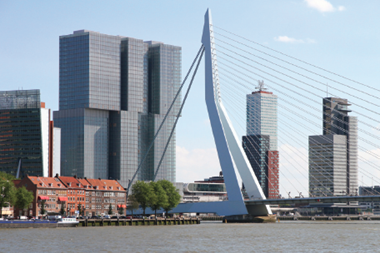The coverage ratio of Dutch pension funds increased by at least eight percentage points on average last year, in particular thanks to improving equity markets, according to Mercer and Aon Hewitt.
Mercer saw the schemes’ funding rise by one percentage point to 107% on average during December. Aon Hewitt, which applies slightly different criteria, found that coverage had last month remained unchanged, at 106%.
Aon noted that the funding level at the end of 2017 exceeded the required minimum of 104.3% and said it expected that only a few pension funds had closed the year with a funding shortfall.
This compares favourably with the situation at the end of 2016. Then, coverage of Dutch pension funds was 98% on average, after funding had just jumped thanks to improving equity markets and rising interest rates in the wake of the election of Donald Trump as US president.
At the time, it was expected that no more than 10 pension funds would have to start cutting pension rights in 2017.
As schemes are allowed to spread out necessary discounts, cuts were expected to be limited to a maximum of 1% last year.
Commenting on 2017, Mercer said that worldwide developed market equities had risen 0.7% without a 50% currency hedge in December, and 1% in case schemes had applied such a hedge. It added that equities in emerging markets had gained 2.9%.
The rise in the swap rate hardly contributed to a drop in liabilities, as the ultimate forward rate fell from 2.9% to 2.6% last year
Aon Hewitt
Listed property and commodities yielded 0.8% and 2.3%, respectively, last month, while euro-denominated government bonds and credit had lost 0.8% and 0.3%, respectively, according to Mercer.
Aon indicated that equity investments without currency hedging had generated 10% over last year.
It said the US dollar had depreciated 14% relative to the euro.
Property portfolios lost more than 2% on average last year, according to Aon, which added that fixed income portfolios had remained largely at the same level.
During December, the 30-year swap rate – the main criterion for discounting pension funds’ liabilities – dropped marginally to 1.50%. At the end of 2016, the rate stood at 1.23%.
Aon Hewitt noted that the rise of the swap rate had hardly contributed to a drop in liabilities, as the ultimate forward rate (UFR) had fallen from 2.9% to 2.6% last year. The UFR is part of the discount mechanism for Dutch pension funds’ liabilities.
“As a result of this reduction, pension funds must apply higher liabilities for long durations, which has cancelled out the effect of decreased liabilities for the short durations,” the consultancy said.
The UFR allows pension funds to apply higher interest rates than the market rate for long-term liabilities. However, the difference between the market rate and the UFR has decreased significantly.
Mercer noted that pension funds’ liabilities had risen 0.1% on balance last month, following an increase in short-term interest rates and a slight drop in long-term rates.
Edward Krijgsman, senior investment consultant at Mercer, explained that pension funds’ liabilities are more susceptible to long-term interest rates, whereas regular government bonds and credit are more affected by short-term rate developments.












No comments yet